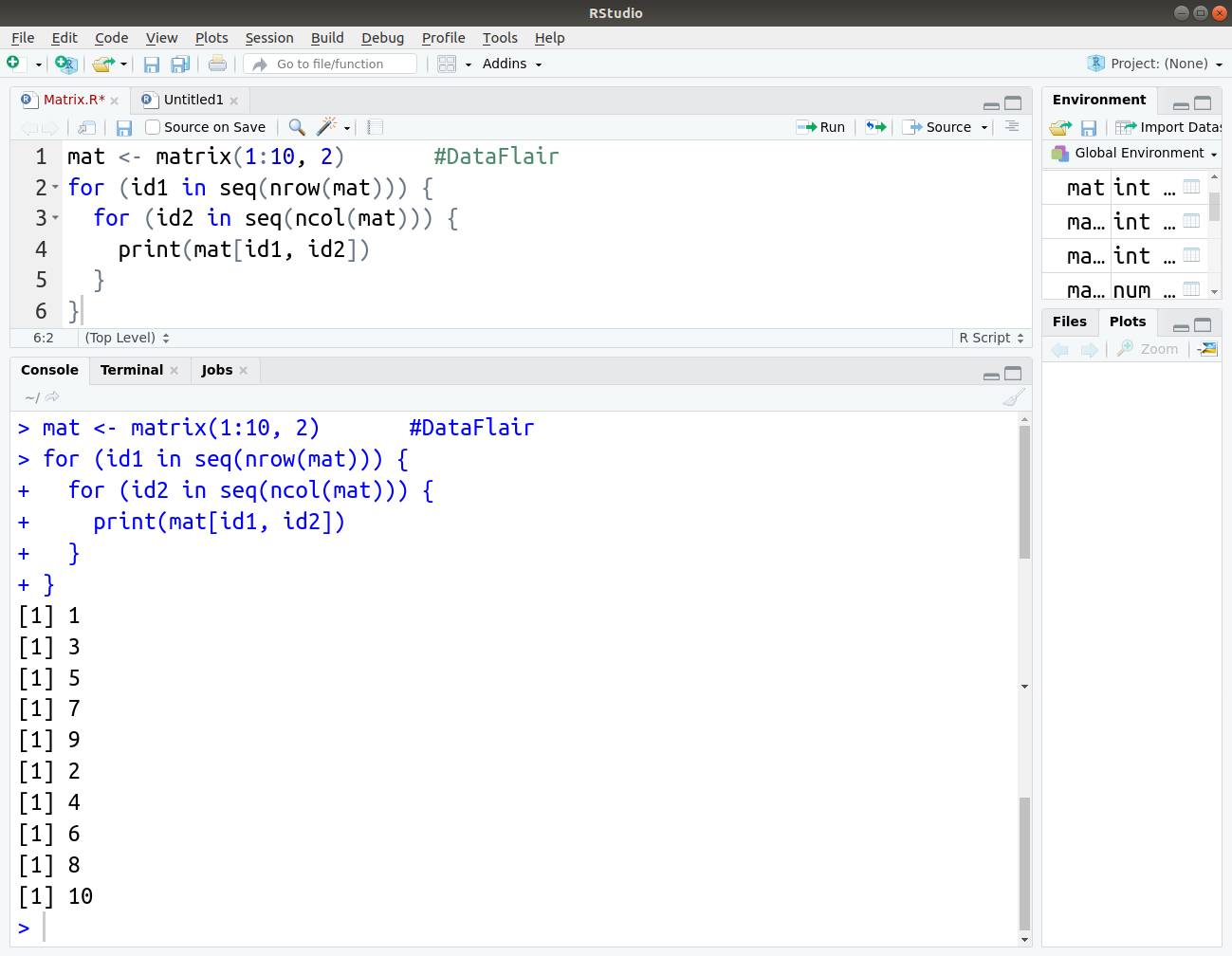


Sometimes for() is easier and simpler to use, but perhaps more verbose (which isn't always a bad thing!), whilst lapply() and sapply() are quite succinct and useful where you don't need to jump through hoops to create a workable wrapper function. In the video, I’m explaining how top loop and repeat the estimation of multiple regression models using the R programming syntax of this tutorial in RStudio. Which you will find most useful ( for() loop or the lapply(), sapply() versions) will depend on your programming background and which you find most familiar. > sapply(spamdata, foo, string = "Lottery")
HOW TO DO A FOR LOOP IN R CODE
In general, we want our code to complete before the end of the world so that. Failing to do so will result into an infinite loop. In other languages, it often goes by the name do while, or something similar. Incrementing i is important as this will eventually meet the exit condition. So, the body of the loop is entered and i is printed and incremented. Here, the testexpression is i < 6 which evaluates to TRUE since 1 is less than 6. Note we can make our wrapper function foo() more useful by allowing it to take an argument defining the spam word you wish to search for: foo sapply(spamdata, foo, string = "viagra") In the above example, i is initially initialized to 1. Sapply() will simplify the returned object where possible, as follows: > sapply(spamdata, foo) Loops are the fundamental structure for repetition in programming for loops perform the same action for each item in a list of things. Instead of using grepl() directly, we can write a wrapper: foo lapply(spamdata, foo) Tighten up the controlling condition (s) so that you can exit it at the earliest possible instant, and. Note that instead of an implicit loop we could also use the sapply() or lapply() functions, which create the loop for you but might need a bit of work to write a custom function. The best way to speed up any loop is to do less of it. The result is a vector VAT that contains, for each client, the correct VAT that needs to be applied. Dont use a loop when a vectorized alternative exists Dont grow objects (via c, cbind, etc) during the loop - R has to create a new object and copy across. In each round through the loop, add the outcome of switch () at the end of the vector VAT. For every value in the vector client, apply switch () to select the correct amount of VAT to be paid. Notice how we used i as a place holder for 1, 2, and 3 - at each iteration of the loop, i takes on the next value in the sequence 1, 2, 3 so we can i) access the ith component of spamdata to get the next subject line, and ii) access the ith element of words to store the result of the grepl() call. Create a numeric vector with length 0 and call it VAT. Which matches what we know from the made up subjects. Lets set up some dummy data for illustration purposes: subjects words I presume that you want to loop over the elements of spamdata and build up an indicator whether the string "viagra" is found in the subject lines of your emails.


 0 kommentar(er)
0 kommentar(er)
